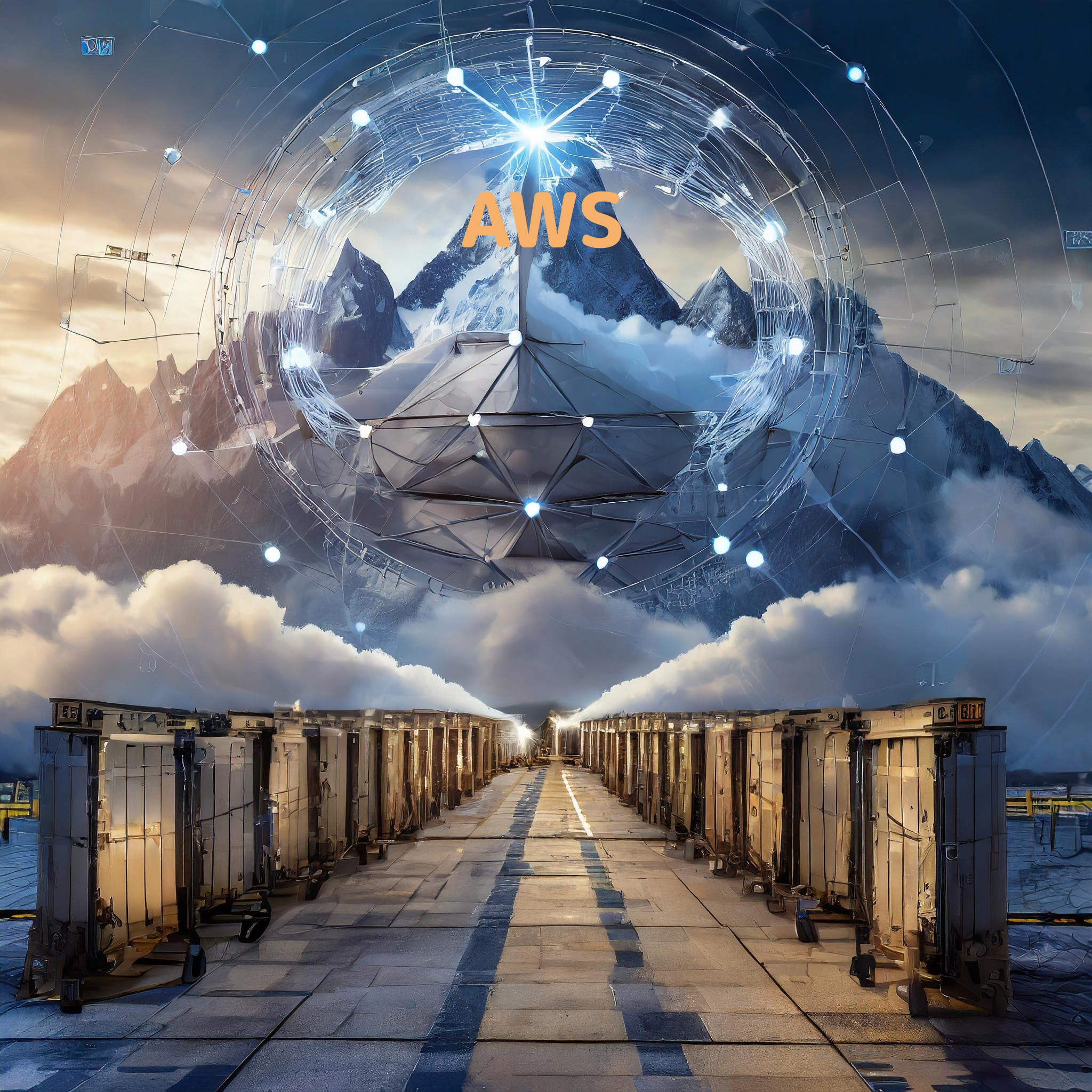Cloud Migration Services on AWS
 Murali Mohan Atluri
Murali Mohan Atluri
Learn how you can migrate your workloads to the cloud for free with AWS's cloud migration services. In this blog, we'll explore the tools and resources provided by AWS to help you smoothly transition your workload to the AWS cloud at a high level. In upcoming blogs, we will delve into each product practically by logging into the AWS console.
Why Migrate to the AWS Cloud?
AWS has helped many organizations move their work to the cloud, no matter how big or small. You can move pretty much anything - like apps, websites, data, and even whole data centers - from your current setup to AWS. At every stage, AWS can help you learn and improve, so you can get the benefits quicker.
AWS Migration Product offerings
Start your move to the cloud with AWS migration product offerings.
We will now explore following products at a high level to assist in migrating your workloads to AWS. I request you to follow AWS documentation for more in-depth knowledge. Additionally, AWS experts are always available to assist you at each stage of your migration.
AWS Migration Hub
AWS Application Migration Service (MGN)
Cloud Migration Factory
AWS Application Discovery Service
AWS Service Catalog
AWS Database Migration Service
Migration Evaluator (Formerly TSO Logic)
AWS Mainframe Modernization
AWS Migration Hub:
★ AWS Migration Hub (Migration Hub) provides a single place to discover your existing servers, plan migrations, and track the status of each application migration.
★ The Migration Hub provides visibility into your application portfolio and streamlines planning and tracking.
★ You can visualize the connections and the status of the servers and databases that make up each of the applications you are migrating, regardless of which migration tool you are using.
★ Migration Hub gives you the choice to start migrating right away and group servers while migration is underway, or to first discover servers and then group them into applications. Either way, you can migrate each server in an application and track progress from each tool in the AWS Migration Hub.
★ ALWAYS FREE. There is no charge to use the AWS Migration Hub to collect and store discovery data in your home region, or to plan or track a migration to AWS. You pay for the cost of the migration tools you use and any resources being consumed on AWS. Refactor Spaces is an optional feature with costs associated.
★ Unlimited - Obtain unlimited right-sized EC2 instance recommendations.
★Unlimited - Track unlimited number of applications as they migrate.
AWS Application Migration Service (MGN)
★ AWS Application Migration Service (MGN) is a highly automated lift-and-shift (rehost) solution that simplifies, expedites, and reduces the cost of migrating applications to AWS.
★ AWS Application Migration Service minimizes time-intensive, error-prone manual processes by automating the conversion of your source servers to run natively on AWS.
★ Enables seamless migration of numerous physical, virtual, or cloud servers without compatibility issues, performance disruptions, or extended cutover periods.
★ Accommodates any source environment (on-premises data center, other clouds, or different AWS regions) and is application-agnostic, supporting any application running on the source servers.
★ This service works on a physical level by moving data that is stored on any directly attached block storage device (such as a hard drive or SAN drive) to the corresponding Amazon Elastic Block Store (Amazon EBS) storage device on AWS.
★ This service uses traditional backup/restore methods while achieving near-second Recovery Point Objective (RPO) and minute-level Recovery Time Objective (RTO) through Continuous Data Protection (CDP) synchronization between source and target storage devices.
★ You can use the Cloud Migration Factory to automate most manual tasks, manage multiple machines, and orchestrate migration waves.
★ You can utilize AWS Application Migration Service for each source server migration for a free period of 90 days or 2,160 hours. The free period begins upon installation of the AWS Replication Agent on your source server and lasts during active replication. If migration isn't completed within this timeframe, hourly charges will apply until migration is finished.
| AWS MGN Usage | Pricing |
| Cost during first 90 days (2,160 hours) of server replication | Free |
| Cost per hour (after free period) | $0.042 per server |
| Cost per month (after free period) | ~$30 per server |
Cloud Migration Factory
★ The Cloud Migration Factory solution is an orchestration platform for migrating applications to AWS at scale.
★ Customers can use it to automate manual processes for their medium-scale to large-scale migrations.
★ The solution helps reduce migration failures, increase migration velocity, and provide a central location for migration status.Accelerating migrations to AWS can help reduce the overall project timeline and costs.
★ Cloud Migration Factory comes with automation scripts for the universal activities in the build, validate, test, and cutover phases. You can update or augment the scripts to suit your specific requirements.
AWS Application Discovery Service
★ AWS Application Discovery Service helps you plan cloud migration projects by gathering information about your on-premises data centers.
★ This Service gathers detailed information about data center servers, including specifications, hardware configuration, performance metrics, running processes, and network connections. This data enables enterprises to conduct Total Cost of Ownership (TCO) analysis and create cost-optimized migration plans tailored to specific business needs.
★ Data collected from on-premises servers can be explored using Amazon Athena, enabling analysis of system performance, running processes, and network dependencies.
★ The Application Discovery Service discovery tools are available at no charge. You only pay for the AWS resources (e.g., Amazon S3, Amazon Athena, or Amazon Kinesis Firehose) that are provisioned to store your on-premises data. You only pay for what you use, as you use it; there are no minimum fees and no upfront commitments.
AWS Service Catalog
★ AWS Service Catalog lets you centrally manage your cloud resources to achieve governance at scale of your infrastructure as code (IaC) templates, written in CloudFormation or Terraform configurations. These IT resources can include everything from virtual machine images, servers, software, databases, and more to complete multi-tier application architectures.
★ You can get started with AWS Service Catalog by using one of the well-architected product templates in the Getting Started Library or by following the steps in one of the getting started tutorials.
★ AWS Service Catalog offers a free tier, allowing creation and management of applications and associated resources. It includes 1,000 API calls per month; exceeding this limit incurs charges based on API usage. Estimate costs using the AWS Pricing Calculator.
★ High-Level Benefits of AWS Service Catalog:
Standardization: Ensures uniformity in product provisioning across the organization.
Self-Service: Allows users to independently discover and launch products they need.
Access Control: Offers granular control over who can access and launch specific products.
Extensibility: Facilitates easy addition of products to portfolios and seamless version control.
AWS Database Migration Service
★ AWS Database Migration Service (AWS DMS) is a managed migration and replication service that facilitates the quick, secure, and low-downtime transfer of database and analytics workloads to AWS, ensuring zero data loss.
★ AWS DMS supports migration between over 20 database and analytics engines, including Oracle, MySQL, Microsoft SQL Server, MongoDB, and Amazon S3. It enables migrations to various AWS services such as Amazon Aurora, Amazon RDS, Amazon Redshift, and Amazon DocumentDB.
★ AWS DMS initiates database migration by establishing a connection with the source data store, extracting data, and formatting it for the target data store. The formatted data is then loaded into the target data store. While much of this process occurs in memory, large transactions may necessitate buffering to disk. Cached transactions and log files are also written to disk as part of the migration process.
★ AWS DMS offers tools like DMS Fleet Advisor to discover source data infrastructure, providing an inventory of servers, databases, and schemas for migration to the AWS Cloud.
★ Utilize DMS Schema Conversion or AWS Schema Conversion Tool (AWS SCT) to automatically assess and convert source schemas to the desired target engine for seamless migration.
★ With the AWS Free Tier, users can begin utilizing AWS DMS at no cost. The Free Tier encompasses up to 750 hours of Single-AZ dms.t2.micro instance usage monthly, available for one year.
★ Calculate your AWS Database Migration Service and architecture cost in a single estimate @ https://calculator.aws/#/createCalculator/DMS .
Migration Evaluator (Formerly TSO Logic)
★ Migration Evaluator is a service for assessing migration, aiding in the creation of a directional business case for AWS cloud planning and migration. By analyzing your organization's current infrastructure and utilization, it projects future-state cloud costs, including AWS costs. The software models compute patterns for all instances, offering insights into projected costs for re-hosting at AWS, including breakdowns by infrastructure and software licenses.
★ Please fill out the migration assessment from, and you will be contacted by an expert. After installation of the free agentless collector, within two weeks you will receive your report with customized insights.
★ Migration Evaluator is a complimentary service to create data-driven assessments and business cases for AWS cloud planning and migration.
AWS Mainframe Modernization
★ AWS Mainframe Modernization service is a unique platform that allows you to migrate and modernize your on-premises mainframe applications to a cloud native fully-managed runtime environment on AWS.
★ This service offers tools and support for planning and executing migration and modernization tasks. It enables analysis of existing mainframe applications, facilitates development or updating using COBOL or PL/I, and allows for the creation of automated CI/CD pipelines.
★ Mainframe Modernization supports two transformation patterns: replatforming and automated refactoring. Select your best-fit migration pattern based on business objectives.
★ Using Mainframe Modernization, system integrators can help discover your mainframe and legacy workloads, assess and analyze migration readiness, and plan migration and modernization projects. Once planning is complete, you can use the Mainframe Modernization built-in development tools to replatform or refactor your mainframe and legacy workloads, test workload performance and functionality, and migrate your data to AWS.
★ With AWS Mainframe Modernization, you're charged based on the components you use, without any upfront fees or minimum commitments, and there's an option for committed plans for extra savings.
Thank you for taking the time to read my article. I genuinely appreciate your interest and hope you found the content informative and valuable. Stay tuned for more insightful articles and updates in the future!
Disclaimer: Some of the content of this article is based on information obtained from AWS (Amazon Web Services) documentation and materials. All copyrights, trademarks, and intellectual property rights related to AWS belong to Amazon.com, Inc. or its affiliates. This article is not an official publication of AWS, and the views and opinions expressed herein are solely those of the author, not AWS. The author does not claim any endorsement or affiliation with AWS. Readers are encouraged to refer to the official AWS documentation for complete and up-to-date information.
Subscribe to my newsletter
Read articles from Murali Mohan Atluri directly inside your inbox. Subscribe to the newsletter, and don't miss out.
Written by

Murali Mohan Atluri
Murali Mohan Atluri
14+ years of overall IT experience in infrastructure assessment, migration, systems administration,cloud,kubernetes,monitoring,observability,devops,server automation and data center operations across various platform (AIX, Linux, Solaris,Windows) in large scale IT infrastructure within a large enterprise environment. I am a Cloud and DevOps enthusiast and quick learner, interested in learning new technologies.